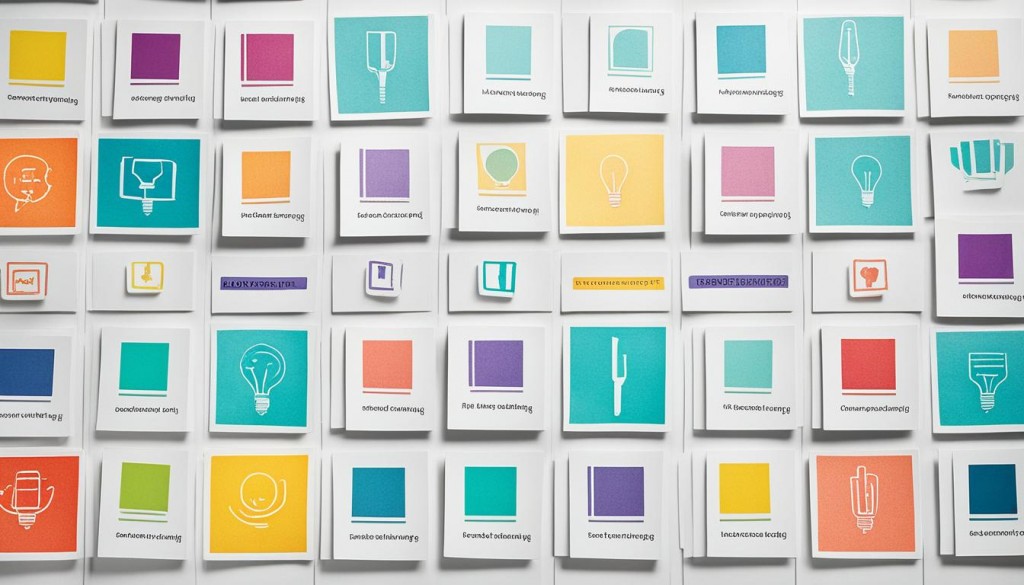July 28, 2025
The microlearning Revolutionize the online training thanks to short sessions. These last 10 to 15 minutes to match busy routines. Renowned firms, such as google and walmart, use it for its flexibility in the world ofdigital learning in business. This method, based on learning short and clear concepts, maximizes memorization. It is inspired by discoveries about human memory, such as Miller's law And the Forgetting curve by Ebbinghaus.
The microlearning, also called micro-training or Nano learning, is a modern learning approach. It focuses on short, focused lessons. In this way, you can learn or improve your knowledge without spending a lot of time.
According to the Definition of microlearning, these are short lessons, between 5 and 15 minutes. These lessons cover specific topics that are highly relevant to the learner. This method allows for rapid absorption of knowledge. In addition, content review is easy.
Over time, microlearning has changed a lot. Originally it was used informally. Then, he integrated himself into the strategies of online learning. Today, it has become a standard method in the world of training. Technological advances have contributed greatly to this. The platforms of elearning interactive and mobile applications have made microeducation popular. These technologies not only made the process more efficient but also more accessible.
Microlearning benefits businesses and learners by offering innovative training methods. By using short and accessible modules, it is characterized by its flexibility, efficiency, as well as by the savings generated.
This type of learning offers temporal and spatial freedom. Learners can access lessons whenever they want, from a variety of devices. This is very beneficial for those whose schedules are very tight. Thus, the training takes place without interfering with professional obligations. https://www.youtube.com/watch?v=n1pnYhkTlJo
Microlearning is recognized for its effectiveness in making information remember. It uses doses of data that are perfectly dosed for the brain. The short sessions, which are repeated regularly, support lasting memorization. This approach guarantees a profound assimilation of the knowledge granted, ideal for a continuing education of quality.
From a financial point of view, microlearning is proving to be a wise choice. Its implementation allows a significant reduction in training expenses. This system, built on short and reusable lessons, reduces creation and management costs. This is an economically beneficial learning solution.
Microlearning is revolutionizing learning by providing short, dynamic lessons. Accessible via mobile devices, these training modules captivate learners. As a result, knowledge engagement and retention are improving.
Of educational segments brief and precise characterize this technique. Ten minutes are enough to understand a subject thanks to videos, quizzes, or scenarios. These formats, in addition to simplifying understanding, promote memorization.

Microlearning takes advantage of digital advances such as Mobile learning and LMS. These technologies offer access to training anywhere, anytime. Learning thus becomes more practical and flexible. The content is adapted for smartphones and tablets. This ensures an optimal learning experience regardless of the device used.
La Gamification enriches the microlearning experience by adding game elements. Badges, points, rankings: these mechanisms boost engagement. In addition, they stimulate the desire to progress in training. This approach makes learning more fun and dynamic. It also promotes better memorization, thanks to the continuous interaction with the contents.
Microlearning requires certain practices to ensure the effectiveness of its content. By applying these tips, creating rich, interactive learning becomes possible.
The secret of microlearning? Brevity and accuracy. Each course must be clear so that learners understand quickly. With only one objective per module, we avoid overloading their minds. Use simple and direct language, avoid unnecessary jargon that could unnecessarily complicate the content. This helps learners grasp key concepts quickly. Provide short summaries at the end of each module and include short assessments to check comprehension. This reinforces learning and helps anchor information.
Varying the types of media, such as videos, infographics, or podcasts, adapts to all learning styles. This mix makes the lessons more attractive and makes it easier to understand difficult topics. It also helps to better retain information.

To keep learners motivated, interactivity is essential. Quizzes, interactive questions, and simulations encourage them to participate. And the immediate feedback on the exercises helps them make further progress.
Leaders like google and walmart have adopted microlearning. They incorporated it into their training to improve employee engagement and performance.
Google has opted for short modules, ideally suited to the needs of its workforce. This strategy ensures the rapid absorption of knowledge, without affecting everyone's schedule. At the same time, Walmart has deployed an approach similar to Google. It offers training sessions via mobile applications, thus offering global accessibility to its content.

In biotechnology, Sinfony stands out for its innovative use of microlearning. Its courses are tailor-made to meet the specific technical needs of the field. They are designed to adapt to tight schedules and offer a rapid assimilation of the delicate knowledge of biotechnology.These cases highlight the effectiveness of microlearning, both for mastodons and for specialized startups. It is proving to be a tailor-made approach, even for sectors as demanding as biotechnology.
Microlearning is a valuable tool that helps simplify learning for current learners. Two concepts, the Miller's law And the Ebbinghaus forgetting curve, explain to us why. By understanding these principles, content creation can be improved. This increases knowledge retention over the long term.
According to the Miller's law, our short-term memory can absorb only seven ideas at a time. Thus, lessons that are too long may overload our brain. Microlearning, with its short sessions, adapts perfectly to this limit. It allows information to be assimilated more easily, promoting better retention.
La Ebbinghaus forgetting curve Shows us that we forget a lot if we don't review. Microlearning uses this fact by organizing learning in small doses. Thus, spaced reminders help to remember what has been learned. It is an effective method to fight against forgetfulness. By intelligently combining the Miller's law And the Ebbinghaus forgetting curve, the microlearning change the way we approach learning. It makes the absorption of new information more effective and fights forgetting in a structured way.PrincipleImpact on microlearningMiller's lawHelps to structure modules conciselyEbbinghaus forgetting curvePromotes the repetition and spacing of informationLong-term retentionImproves knowledge retention through short, repeated modules
The microlearning Revolutionize the continuing education by allowing trainees to broaden their horizons step by step, independently. This process ofprofessional apprenticeship constantly stimulates the acquisition of new skills. It increases their flexibility in the face of changes in the sector and technologies. Its fragmented structure makes the microlearning easily integrated into daily life, without disrupting work. Workers cultivate themselves at their own pace, reinforcing their achievements from the start. Coupled with classical teaching methods, it is powerful inprofessional development.The addition of microlearning In a continuing education targets everyone's shortcomings with tailor-made courses. In addition, updating information in real time increases competitiveness by adapting knowledge to the market. This system keeps the workforce relevant and efficient.
Microlearning is effective in several areas, but it faces challenges. Understanding these limits is crucial to optimize its use.
The main microlearning challenges is to simplify the complexity of subjects. Sometimes, breaking up a complex topic can interfere with its logic. For example, an advanced science lesson can be difficult to present in a piecemeal manner while remaining consistent.
La Fragmentation of knowledge is a significant issue. By focusing too much on short learning units, the learner could miss the overall context. Thus, it is vital to complement microlearning with other methods to maintain the coherence of knowledge.ChallengesDescriptionsComplexity of topicsDifficulty fragmenting complex topics without losing coherenceFragmentation of knowledgeRisk of creating gaps without an overview limitations of microlearning call for a mixed strategy. By combining various types of training, learners can take advantage of both the flexibility of the short format and the depth of extended content.
Microlearning stands out for its ability to offer flexible, inexpensive, but effective training. This method is ideal for current companies that want to improve the skills of their teams in a concrete and attractive way. Thanks to adapted practices, companies can adopt a training strategy innovative and tailor-made. This supports continuous learning and retention of learning. The main benefits of microlearning include the ability to choose when to learn, as well as increased assimilation of content through short, focused lessons. Also, it is very economical for organizations. It reduces the expenses associated with the development and dissemination of educational modules. However, for relevant implementation, it must be combined with other educational approaches. This avoids the Fragmentation of knowledge and ensures consistency in the teaching of complex subjects. Integrating microlearning into a larger training strategy allows businesses to take full advantage of its benefits. In this way, they can offer a professional development solution that lasts over time.
Microlearning is a vocational training approach that focuses on learning through short educational modules, often under 5 minutes, which allow better retention of information.
Microlearning can be integrated into professional training by adding short modules between face-to-face or online training sessions, or as a reminder and reinforcement tool after longer training.
Microlearning allows better retention of information, offers great flexibility because it can be followed on any device, and is easily adaptable to the needs of employees in their moments of availability.
While traditional e-learning can include long online learning sessions, microlearning focuses on short formats, typically up to 10 or 15 minutes, that allow for rapid assimilation of information.
Formats that are best suited for microlearning include short videos, infographics, interactive quizzes, and other types of engaging content that allow key information to be delivered quickly.
Microlearning effectively promotes learners' engagement by offering short and interactive modules that can be easily inserted into their schedule, making learning more accessible and relevant.
The effectiveness of a microlearning training module can be evaluated through follow-up quizzes, practical activities, and employee evaluations of the impact and relevance of the modules.
Examples of microlearning in a professional context include 30-second video tutorials on using new software, short podcasts on communication skills, and interactive post-training quizzes to reinforce learning.
Using microlearning for distance learning is relevant because it allows employees to follow short modules at their own pace and according to their availability, thus promoting flexible and continuous learning.
The future of training with microlearning seems promising with the rise of mobile learning and blended learning, with an emphasis on short and interactive formats that adapt to the evolving needs of learners and organizations.
Des formations conçues par des experts métier, régulièrement mises à jour pour coller aux exigences terrain. Découvrez nos modules les plus suivis et les mieux notés par les professionnels.

Formation complète sur les Bonnes Pratiques de Fabrication (BPF) adaptée à votre profil professionnel dans l'industrie pharmaceutique et vétérinaire.

Maîtriser les techniques et les procédures essentielles.

Les procédures essentielles d'hygiène et de sécurité pour le personnel...